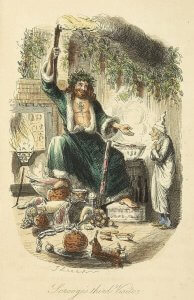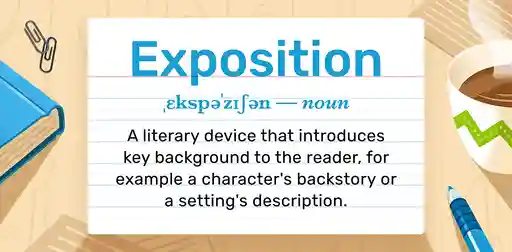Last updated on Nov 04, 2022
8 Character Development Exercises to Write 3D Characters
About the author
Reedsy's editorial team is a diverse group of industry experts devoted to helping authors write and publish beautiful books.
More about the Reedsy Editorial Team →Dario Villirilli
Editor-in-Chief of the Reedsy blog, Dario is a graduate of Mälardalen University. As a freelance writer, he has written for many esteemed outlets aimed at writers. A traveler at heart, he can be found roaming the world and working from his laptop.
View profile →Even the most fast-paced, action-driven novels need compelling characters to engage readers. Of course, readers will never “get to know” a character if the author doesn’t understand who they are and what is driving them first. To this end, we’re about to get up close and personal with a few character development exercises.
PRO-TIP: If you're at the beginning stages of creating characters and haven't picked a name yet, our character name generator may come in handy. You can find it here. Or, if you want some further inspiration, you can use our plot generator which will randomly assign basic motivations for your character. Check it out here!
1. Play a game of Truth and Dare with your characters
Most of us remember “truth or dare” from childhood sleepovers. Some would bravely declare “DARE!” and wait for the inevitably embarrassing challenge. Others would hazard a “truth…?” and wait nervously in their sleeping bags while the challenger mulled over which deeply provoking and juicy question to ask.
To dive deeper into your character’s emotional depths, ask a round of questions — both probing and seemingly innocuous alike. (Hey, you never know when your character’s favorite choice of ice cream topping might come in handy!) We recommend downloading our character-creation sheet — with the help of this worksheet, you'll be raring to go.

FREE RESOURCE
Reedsy’s Character Profile Template
A story is only as strong as its characters. Fill this out to develop yours.
And if you need additional help, these questionnaires will provide solid inspiration for now:
Arthur Aron’s 36 Questions That Lead to Love
“Your house, containing everything you own, catches fire. After saving your loved ones and pets, you have time to safely make a final dash to save any one item. What would it be? Why?”
“Would you like to be famous? In what way?”
“What is your most treasured memory?”
The Proust Questionnaire
“What is your idea of perfect happiness?”
“What is the trait you most deplore in yourself?”
“What do you consider your greatest achievement?”
2. Put your character in the Trolley Problem
How a person reacts to a difficult situation can be very revealing — and your character’s fundamental goal will inform how they respond to challenges.
Develop your characters further by placing them in a situation where they are faced with a challenge. For conflict inspiration, look no further than these classic moral dilemmas (and, of course, analyze them from the perspective of your character):
The Robin Hood Problem
Your character is an eyewitness to a crime.
A man has robbed a bank, but instead of keeping the money for himself, he donates it to an orphanage that can now afford to feed, clothe, and care for its children. You know who committed the crime. If you go to the authorities with the information, there's a good chance the money will be returned to the bank, leaving a lot of kids in need. What does your character do?
-
- Turn the robber in. Stealing is wrong, end of story.
- Keep the information to yourself because the money is going to a good cause.
The Trolley Problem
There is a trolley running down a track. In its path are five people who have been tied to the track and cannot move. Next to your character is a lever with the power to lead the trolley down a different track. Unfortunately, there is a single person tied to that one. What does your character do?
- Nothing. The five people die.
- Pull the lever, saving five people, but killing the single person.
Jot down what might be going through your character's head as they consider the potential consequences of their actions. For instance, if your character decides not to pull the lever in the trolley example, they might imagine explaining to people that there wasn't enough time to reach the lever, and pretend the outcome was out of their hands. If they are leaning towards pulling the lever, they might be swayed by the idea of dealing with one set of grieving family members as opposed to five.
And for an extra twist, try putting your character into a different role in the dilemma (i.e. in the trolley problem, have your character be the train driver or stuck on the track.) You can read this post to learn more about types of character conflict — and if you'd like more conflict-ripe situations, head here.

FREE COURSE
How to Develop Characters
In 10 days, learn to develop complex characters readers will love.
3. Dangle your character from the edge of a conflict
Humans are highly resistant to change — for a character to believably undergo a personal journey that substantially alters them, something HUGE and specific must happen to them. This event doesn't have to happen in your story, but once you can identify your character’s limits, you can determine what is required to create a potential change in their fundamental nature.

At the start of A Christmas Carol, Ebenezer Scrooge is a self-involved miser. He has alienated himself from those around him and lacks empathy, even for his poor clerk, Bob Cratchit, who can barely feed his own children. However, at the novel's end, Scrooge is redeemed as a generous, lively friend. What event inspired this total 180 in his character? The visit from the ghosts of Christmas past, present, and future — and the first-hand knowledge of how his actions have negatively impacted all those around him.
For this exercise, determine what this catalyst for change might be by considering situations or attributes that feel counterintuitive. For instance, if your character is a Good Samaritan, it is unlikely they would commit a crime. What would have to be at stake for this unlikely situation to happen — and for a core part of your character to change?
Putting your character into context
When we crack open a novel, the main character’s current, overarching goal is the reason the story exists for us to read. However, a believable character is not one that has burst into being on Page 1. A compelling character will have external influences and a past that informs their present and the crux of their internal journey.
Consider Magneto of the X-Men series. He is a “villain” who believes that mutants are superior to humankind and should therefore dominate. However, a look into Magneto’s past reveals that he was born into a German-Jewish family during the holocaust, and that their abhorrent treatment by the Nazis lead him to believe that humankind and conflict are inseparable. Therefore, in response, it becomes his goal to protect the mutant race from experiencing similar atrocities “at all costs.”
The following character development exercises will allow you to not only get a more thorough picture of your character’s life, but also to zero in on the significant influences that have shaped who your character is, at this moment in time.
4. Create a timeline of your character’s life
Create a timeline of the significant moments of your character’s life. Like many authors, you can use post-it notes or a big whiteboard to visualize your character’s life. With this creative writing exercise, you can easily move or add events until you feel your character has a well-developed history.
After you’ve finished the timeline, distill it into the top 5-10 moments that have shaped your character. For instance, if loss is a thematically important part of your book, perhaps a significant part of your character’s past is when they lost a grandparent as a child.
5. Write about friends gossiping about your character
In The Great Gatsby, before we meet the novel’s eponymous character, we hear of him. When Nick Carraway, the narrator, first attends one of Gatsby’s famous parties in the hopes of meeting the mysterious millionaire, it takes a while for Nick to find him. During this time, Nick becomes privy to a host of information about Gatsby. And while it is unclear what is fact or fiction — such as the rumor that Gatsby once killed a man — we get a sense of what other characters think of him.

Establishing how your character is perceived by others is a great way to give them greater context. It can provide the author with expectations to subvert for the reader and add an interesting mystique to the character. In the case of Gatsby, it gives him almost a mythical sense. And as the novel continues, it is revealed that this “mythology” is intentional, as Gatsby himself lives life as a character of his own creation.
To give the Gatsby Method a go, write a scene in which your character is only present through candid descriptions of him/her by others.
Bringing your character to life
Once you’ve developed the internal motivations and external influences that drive your character's progression, you need to figure out how you’re going to convey this information. For your protagonist to shine through the page with subtlety, and without the need for long-winded exposition, they need to have their own voice and distinctive physicality, regardless of which narration perspective your novel includes. Try the following character development exercise to get a better idea of your character’s voice.
6. Ask your character your favorite icebreaker questions
Think about it: how many times have you been asked in one form or another, “So, tell me about yourself?” It’s a classic ice-breaker question, and, these days, with social media and the overwhelming variety of ways for us to “present ourselves” to the world, the stakes of “tell me about yourself” have never been higher. Of course, we change the way we answer this question based on who we’re talking to.
Further chip away at your character and establish how they present themselves to others by imagining how they would briefly describe themselves in the following situations:
- In a job interview
- On a first date
- Catching up with an old friend
- Flirting with someone at a party
- In their Twitter bio
- At the border between the US and Mexico
7. Use body language to show your character’s personality traits
When you meet someone, you do not start by announcing your height, weight, hair, and eye color, so please do not introduce your character to readers like this. But how do we describe looks and physicality without resorting to chunks of "telling"?
Consider this line from James Joyce’s Ulysses: “He looked in Stephen's face as he spoke. A light wind passed his brow, fanning softly his fair uncombed hair and stirring silver points of anxiety in his eyes.”
Joyce takes advantage of a moment of action to shed light on Stephen’s looks and his anxious demeanor.
Try your hand at conveying your character through action by first writing a list of physical traits that apply to your character. Next, with that list at hand, write a scene where something is happening — whether it’s a conversation, laundry-folding, cooking, etc. Weave references to your character’s physicality into the action.
8. Test your characters in situations from writing prompts
Sometimes a bad case of writer’s block boils down to a broken connection between you and your protagonist, and the solution can be a change of scenery. Not for you — for your character! Writing prompts are a good way to get the creative juices flowing and can help you clear out the block so your character can continue down your story’s path.
For a weekly supply of fresh writing prompts, head here.
Only once you have acquired a thorough understanding of your protagonist will a compelling and realistic character shine through the page. However, there is disagreement in the world of writing communities regarding what information is or is not relevant for an author to know about a character. While we believe it’s probably unnecessary for an author to know the number of hairs on their character’s head, we also believe you can never know too much about your protagonist. What’s important is discerning what information is significant to the current story you’re writing.
As Ray Bradbury wrote in Zen in the Art of Writing: “Plot is no more than footprints left in the snow after your characters have run by on their way to incredible destinations.”
Hire an expert editor on Reedsy
Teresa G.
Available to hire
I am a passionate and meticulous editor specialising in children's books, currently working as Senior Editor at a top 5 UK publisher.
Susannah W.
Available to hire
Skilled and creative editor with 15+ years' in non-fiction publishing, specialising in arts, culture, heritage, design and architecture.
Rebecca A.
Available to hire
I am a copyeditor, proofreader, and production editor with over ten years of experience in book publishing and project management.











3 responses
Lady Adellandra Dratianos says:
25/08/2017 – 04:28
I have one trick I use when I'm really desperate for answers. I interview my characters. By asking them questions, I can get to the bottom of the problem, and hopefully answer and solve anything I'm having trouble with.
↪️ Tay replied:
09/02/2020 – 05:10
Lol, i tried that once. It went like this: Me: so jax, do you have any siblings? Jax: maybe I do. Maybe I don't. I'm not telling you Me: why not?! Jax: well you SHOT my in the last chapter! Me: if you don't tell me I'm going to kill Blaze Jax: I don't negotiate with terrorists Me: YES YOU DO! You have literally done it on multiple accaisions! Jax: I am a figment of your imagination and therefore not responsible for my own actions Me: what? How are you more witty then I am? HOW IS THAT EVEN POSSIBLE?! Me: wait, what where we talking about?
Katlyn Grow says:
08/05/2019 – 12:28
These are really helpful! I recently heard an author say to picture your character in a car. What are they listening too? Music, an audio book, nothing at all? Where are they going, where are they coming from. This helps me to get to know their personality a little better.